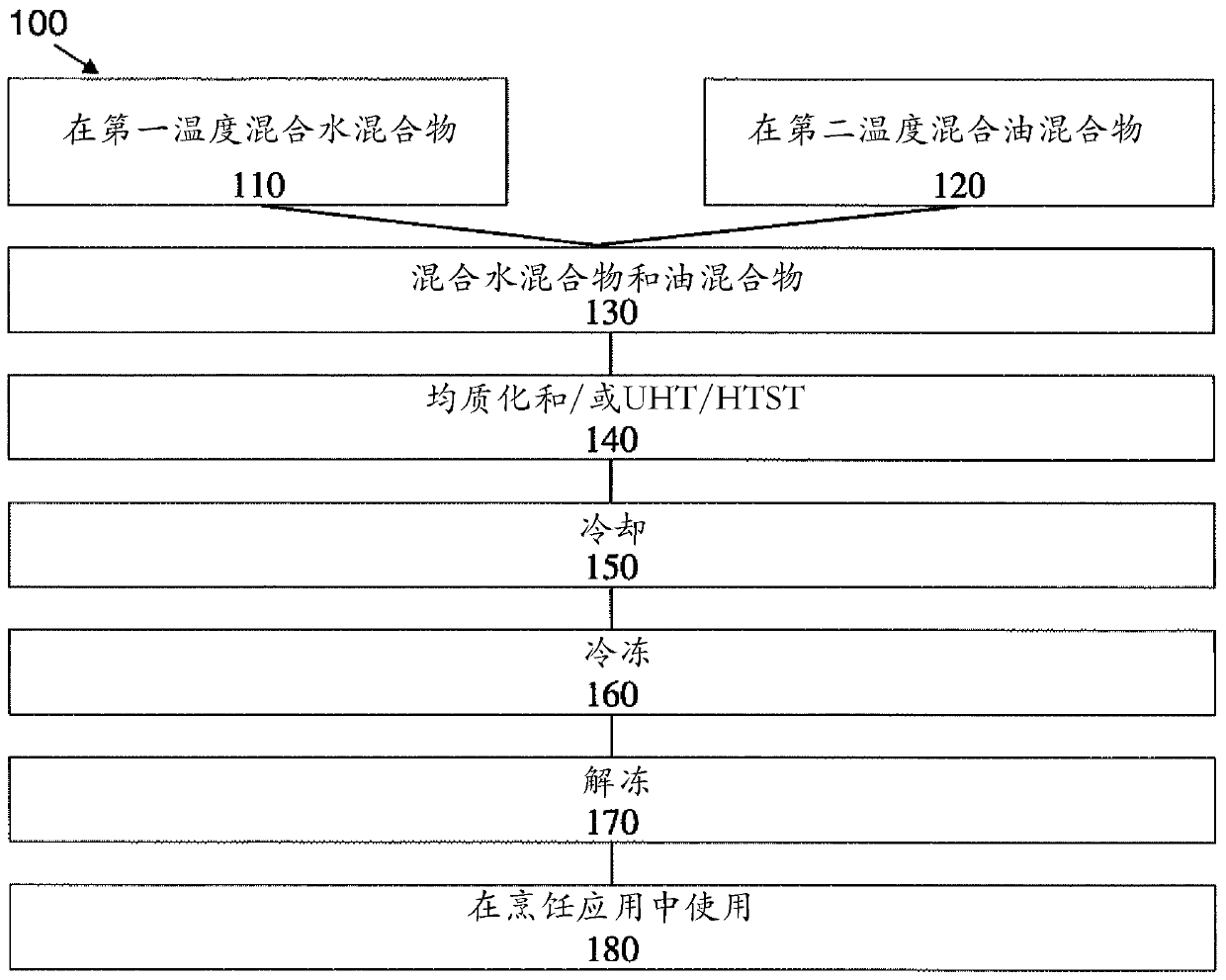PLANT-BASED CULINARY CReME
A plant-based, creamy technology for applications such as cream substitutes, food science, edible oils/fat, etc. to address issues such as lack of versatility
- Summary
- Abstract
- Description
- Claims
- Application Information
AI Technical Summary
Problems solved by technology
Method used
Image
Examples
Embodiment 1
[0090] A non-limiting example of a cooking cream has the composition described in the table below (values are in wt.%).
[0091] Element Example A Example B canola oil (fat) 20-30% 22-27% Propylene Glycol Monostearate (Emulsifier) 0.08-0.4% 0.12-0.25% Modified corn starch (stabilizer) 0.03-0.3% 0.075-0.15% Modified tapioca starch (stabilizer) 0.08-0.4% 0.12-0.25% Reduced fiber from rice milk powder (dairy-free milk powder) 3-7.5% 4.8-6.1% Maltodextrin (leaving agent) 1-5% 1.8-3% rice syrup (sweetener) 8-18% 10-14% Half and half type cream flavoring (flavoring) 0.03-0.3% 0.075-0.18% water 45-60% 48-55% Pea Protein (Protein Source and Texturizer) 0.3-1.5% 0.7-1.3% Trisodium Citrate (buffer) 0.05-0.3% 0.075-0.2% Modified rice extract (stabilizer) 0.01-0.1% 0.02-0.07% Mono and diglycerides (emulsifiers) 0.08-0.4% 0.14-0.28% Xanthan gum (stabilizer) 0.01-0.2% 0.03-0.08% ...
Embodiment 2
[0095] Another non-limiting example of a cooking cream has the composition described in the table below (values are in wt.%).
[0096] Element Example C Example D Non-Hydrogenated Coconut Oil (fat) 1-9.5% 3-7% canola oil (fat) 12-30% 17-22% Propylene Glycol Monostearate (Emulsifier) 0.05-0.4% 0.12-0.27% Modified corn starch (stabilizer) 0.02-0.3% 0.05-0.15% Reduced fiber from rice milk powder (dairy-free milk powder) 3-9% 4.5-7.5% Maltodextrin (leaving agent) 0.8-4% 2-3% Rice Syrup Powder (Sweetener) 5-16% 8-13% Half and half type cream flavoring (flavoring) 0.03-0.3% 0.08-0.18% water 45-62% 50.1-55% Pea Protein (Protein Source and Texturizer) 0.1-2% 0.5-0.9% Trisodium Citrate (buffer) 0.05-0.4% 0.12-0.2% Modified rice extract (stabilizer) 0.01-0.18% 0.02-0.06% Mono and diglycerides (emulsifiers) 0.05-0.5% 0.12-0.25%
[0097] Element Example C Example D ...
PUM
 Login to View More
Login to View More Abstract
Description
Claims
Application Information
 Login to View More
Login to View More - R&D
- Intellectual Property
- Life Sciences
- Materials
- Tech Scout
- Unparalleled Data Quality
- Higher Quality Content
- 60% Fewer Hallucinations
Browse by: Latest US Patents, China's latest patents, Technical Efficacy Thesaurus, Application Domain, Technology Topic, Popular Technical Reports.
© 2025 PatSnap. All rights reserved.Legal|Privacy policy|Modern Slavery Act Transparency Statement|Sitemap|About US| Contact US: help@patsnap.com



